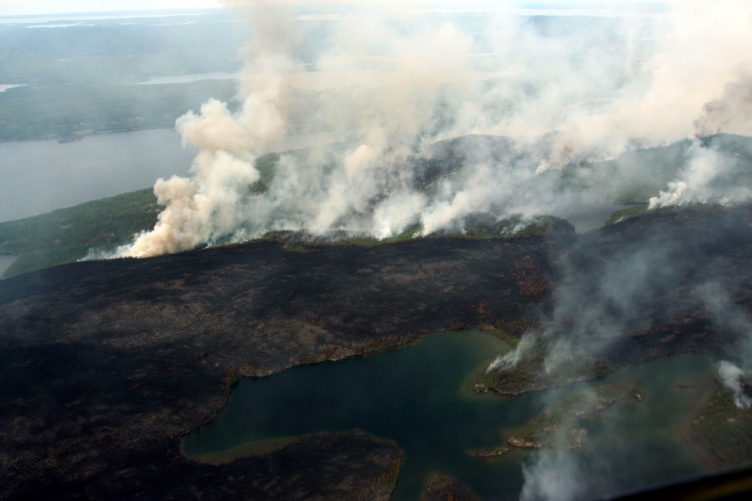
Photo by NASA.
Arctic regions far from the world’s industrial hubs can harbor air pollution of their own that makes it harder to breathe. With a new research grant, UNH scientists are heading to Fairbanks, Alaska to study the mysterious mechanisms of wintertime air pollution and then develop science modules about it for middle-school students.
Jack Dibb, a research associate professor at UNH’s Earth Systems Research Center, has received a $194,683 grant from the National Science Foundation to examine the unique atmospheric chemistry that takes place in the Arctic winter and contributes to air pollution that affects human health. The three-year project, called the Alaskan Layered Pollution and Chemical Analysis (ALPACA) program, will provide data for a computer model that will help scientists better understand the chemistry of air pollution in the northern climates around the world.
In Fairbanks, the levels of fine particulate matter — a mixture of very tiny solid particles, like dirt, soot and smoke, and liquid droplets in the air that can cause breathing problems for people living in the area — can be elevated due to residential heating sources (such as wood and fuel oil), transportation and energy production, Dibb says. The pollution is then trapped by surrounding mountains due to a temperature inversion, where warm air forms a cap to prevent the cold air below from dispersing.
Low light conditions, cold temperatures and snowpack can dramatically change the chemistry of sulfur, which then contributes to the fine particulate matter load. However, very little is known about why sulfur’s chemistry behaves the way it does in wintertime, and so Dibb will collect samples of the fine particulate matter in the atmosphere and snowpack and measure the different chemical forms of sulfur in the air near Fairbanks. Dibb will work in collaboration with scientists at the University of California-Davis, UCLA, the Institute of Environmental Geosciences in Grenoble, France, the University of Houston, and the University of Alaska, Fairbanks, to provide the data needed to create and validate the computer model.
The ALPACA team will also develop a series of three science modules for middle school students that focus on the difference between summertime and wintertime atmospheric chemistry, the relationships between indoor and outdoor air quality and the impacts of wildfire smoke on air quality. The modules will offer activities and projects that examine the data from air monitoring networks, which will be especially useful for homeschooled students.
Dibb says the ALPACA team has already provided air sensors to five middle schools around the country — including one in Barrington, New Hampshire — that will measure fine particulate matter inside and outside the school buildings. This will help students explore similarities and differences of air quality in different parts of the U.S., he says.
“Overall, we think that students should understand the basics of air pollution,” Dibb adds.
-
Written By:
Rebecca Irelan | Institute for the Study of Earth, Oceans, and Space | rebecca.irelan@unh.edu | 603-862-0990

















































